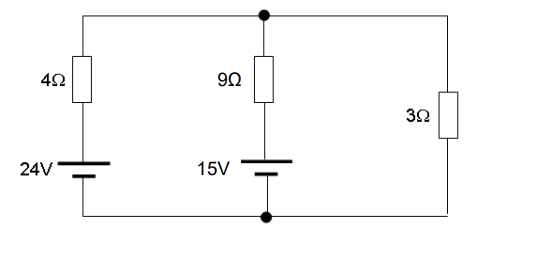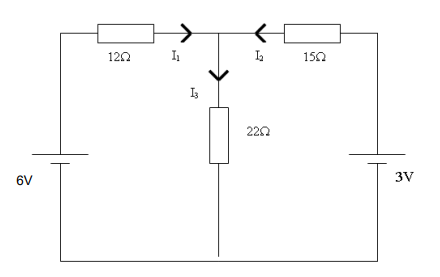- HSC Level 2/3 Unit 012 Assignment: Care Worker Responsibilities and Ways of Working
- CIPD Level 5HR03 Assignment: Understanding Reward Approaches and Their Impact on Performance and Contribution
- CIPD level 5HR02 Assignment: Talent Management and Workforce Planning Unit Guide
- Level 3 D/615/3823 Assignment: Regulation, Protection, and Collaborative Practice in Health and Social Care
- PGM216D Assignment: Bicycle Store Sales Management Application
- MATH6033 Assignment: Epidemiological Investigation of Cardiovascular Health and Tea Consumption Risks
- EH6147 Assingment: Stakeholder Analysis for Quality Improvement in Hand Hygiene Compliance
- Assignment: Investigation of Solution Concentration Through Standard Preparation, Titration, and Colorimetry Techniques
- MATH6033 Assignment: Cardiovascular Risk and Tea Drinking: Epidemiological Analyses
- CIPD level 3 3CO03 Assignment: Core behaviours for people professionals
- DAC4B1: Personal development in adult care settings
- Unit 19 Research Project Assignment 1: Impact of Corporate Social Responsibility on Business Success & Community Wellness
- EG5022 Assignment: Georeferencing and Accuracy Assessment of a Quarry 3D Model Using Photogrammetric GCPs
- Assignment: Financial Performance and Strategic Analysis of a UK Listed Company: A CORE Evaluation and Reflective Review
- 5CNMN002W Assignment: Advanced measurement- Major measurement taking off
- K/650/2298 Level 3 Understanding Roles, Responsibilities, and Effective Partnerships in Health and Social Care
- Understanding Information and Knowledge Management in the Workplace: A Briefing for HR Professionals
- HRM7010D Strategic Use of People Analytics in Enhancing Organisational Value and Agility
- TOWN1060 Urban Planning in the UK History Sustainable Design and Future City Development
- OTHM Level 5: J/650/1143 Research Methods in Health and Social Care
BTEC Unit 19 Electrical and Electronic Principles : Analysis of Circuits with Constant Voltages and Currents HNC Level 4 , Assignment 1, UK
| Subject | Analysis of Circuits with Constant Voltages and Currents |
Learning Outcomes and Assessment Criteria:
LO1 Apply an understanding of fundamental electrical quantities to analyse circuits with constant voltages and currents
P1 Apply the principles of circuit theory to simple circuits with constant sources, to explain the operation of that circuit.
M1 Apply the principles of circuit theory to a range of circuits with constant sources, to explain the operation of that circuit.
D1 Examine the operation of a range of circuits with constant sources, including power analysis, using relevant circuit theories.
Do You Need Assignment of This Question
Unit Learning Outcomes:
Apply an understanding of fundamental electrical quantities to analyse circuits with constant voltages and currents
Assignment Brief and Guidance:
Scenario
You have completed your engineering apprenticeship and have a position in the design department of a electronics consultancy company that offers a range of services. You have been asked by your line manager to reduce the layout of various circuits so that they fit to size of the PCB as specified by the customer. The customer has also asked if current and power can be calculated so they can specify the values in the product technical documents.
Apply the principles of circuit theory for the circuit shown and determine:
(i) the total resistance (RT).
(ii) the total current (IT) supplied by the battery.
(iii) the current flowing through each resistor.
(iv) the total power consumed by the circuit.
(v) Explain and examine the operation of the circuit.

Do You Need Assignment of This Question
Apply the principles of circuit theory for the circuit shown and determine:
(i) the total resistance (RT).
(ii) the total current (IT) supplied by the battery.
(iii) the current flowing through each resistor.
(iv) the total power consumed by the circuit.
(v) Explain and examine the operation of the circuit.

Two batteries A and B are connected in parallel, and a 1.5Ω resistor is connected across the battery terminals. The e.m.f. of and internal resistance of battery A are 12V and 2Ω respectively, and the corresponding values for battery B are 8V and 6Ω respectively. Apply Kirchhoff’s Laws to determine:
(i) the value and direction of the current in each battery.
(ii) the current flowing in and the p.d. across the 1.5Ω resistor.
(iii) Explain and examine the operation of the circuit.

Two batteries A and B are connected in parallel and a load of 3Ω is connected across their terminals. Battery A has an e.m.f. 24V and internal resistance of 4Ω; battery B has an e.m.f of 15V and an internal resistance 9Ω. Apply Kirchhoff’s Laws to determine:
(i) the values and directions of the currents in each branch of the circuit. (
ii) the p.d. across the external resistor i.e. the 3Ω resistor.
(iii) Explain and examine the operation of the circuit.
Buy Answer of This Assessment & Raise Your Grades

Apply Superpostion theory to the circuits below to determine the branch currents I1, I2 and I3 and explain and examine the operation of the circuits.


Are You Looking for Answer of This Assignment or Essay
Looking for UK assignment help with your Analysis of Circuits with Constant Voltages and Currents, Assignment 1? We offer expert BTEC assignment assistance for students, including Unit 19 Electrical and Electronic Principles Assignment examples. Get affordable, high-quality services with 100% human-written assignments—no AI involved! We promise A+ results, guaranteed on-time delivery, and plagiarism-free content. UK students can pay our experts to get the help they need to ace their courses!



